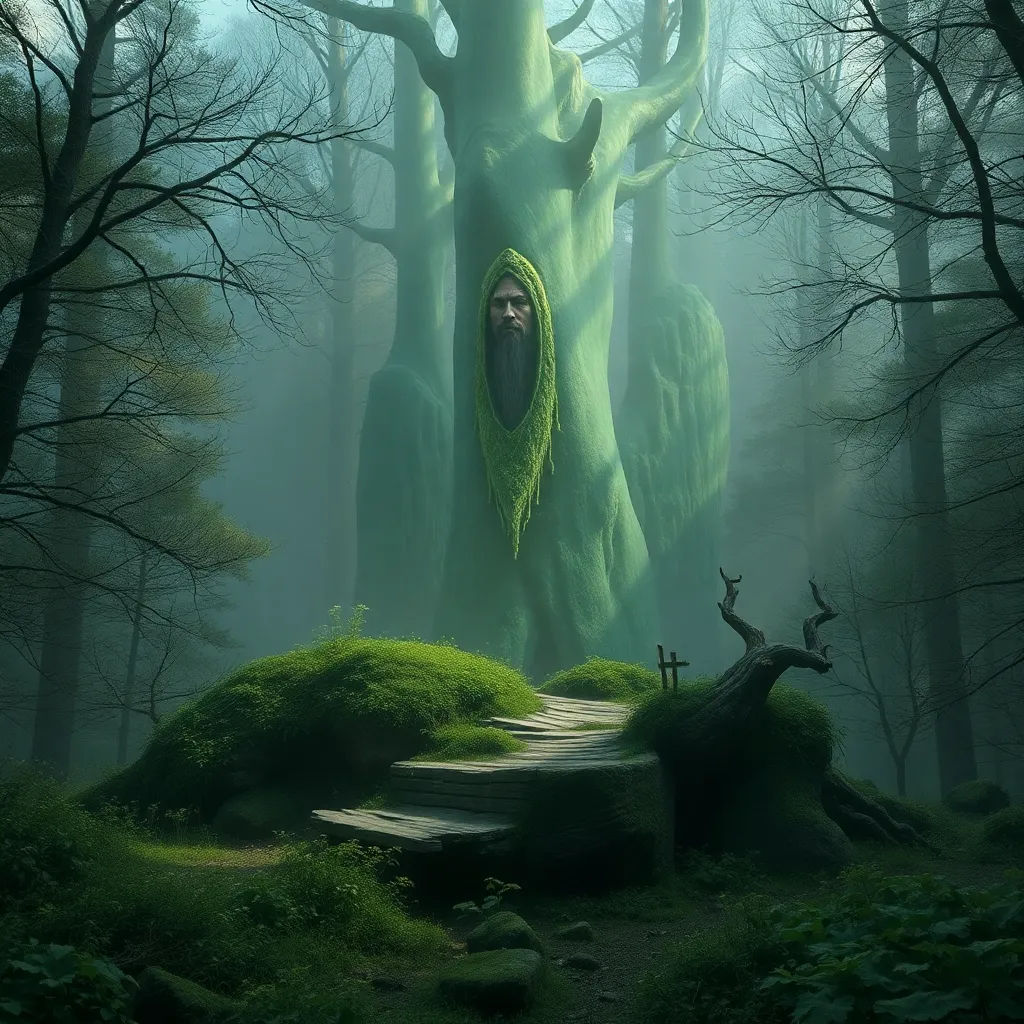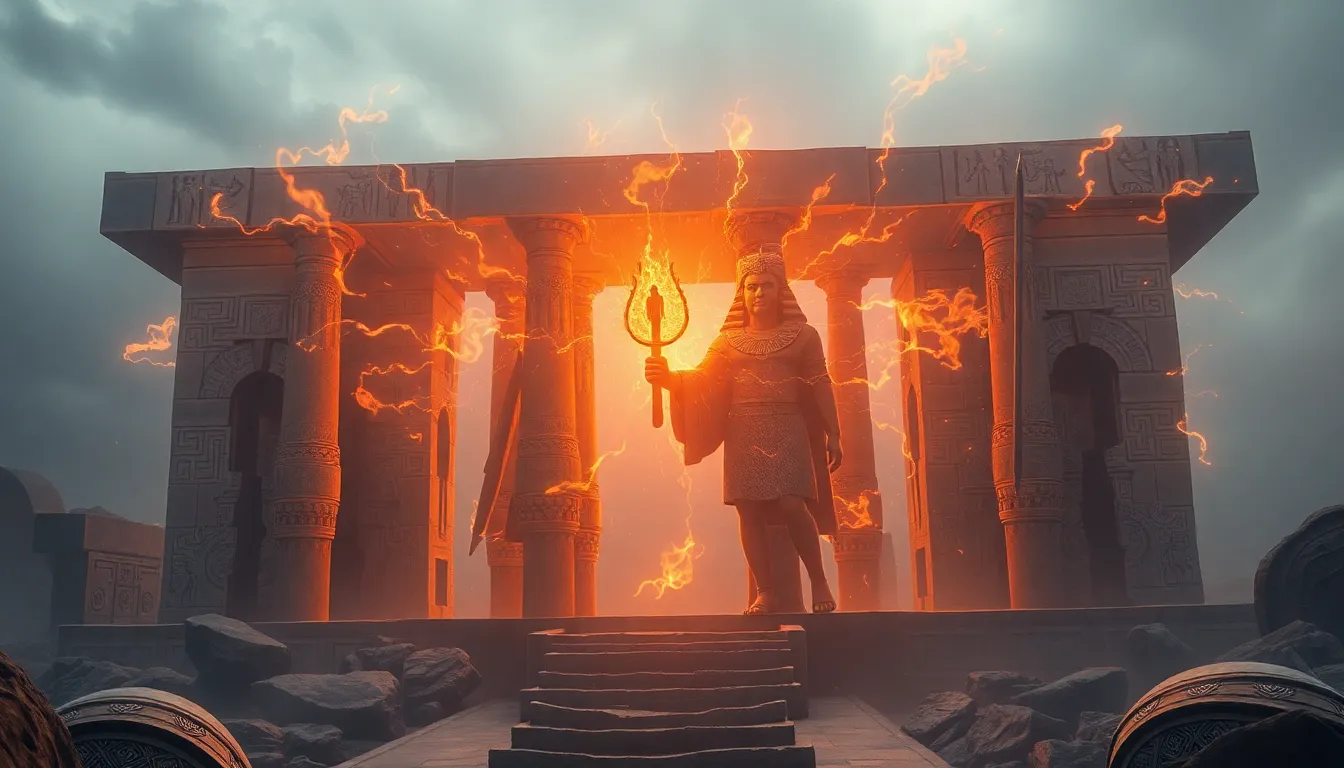The Huldra’s Connection to Nature: Unveiling the Spirit’s Deep Ecology
I. Introduction
The Huldra is a captivating figure in Scandinavian folklore, often depicted as a beautiful woman with a cow’s tail, who resides in the forests and mountains. This enchanting spirit embodies the intricate relationship between humanity and nature, serving as a powerful reminder of the natural world’s beauty and its potential dangers.
In Huldra myths, nature is not merely a backdrop; it is a living entity with which the Huldra interacts deeply. The forests, rivers, and wildlife are integral to her existence and symbolism. This article aims to explore the profound ecological connections associated with the Huldra, revealing how her stories illuminate the importance of respecting and nurturing our natural environment.
II. The Huldra: A Mythical Representation of Nature
A. Description of the Huldra and her characteristics
The Huldra is often described as strikingly beautiful, with long flowing hair and an ethereal presence that draws in those who encounter her. However, her cow’s tail signifies her connection to the wild and untamed aspects of nature. This duality makes her a complex figure, embodying both allure and danger.
B. The symbolism of the Huldra in relation to forests and wildlife
As a spirit of the forest, the Huldra symbolizes the natural world’s mystery and vitality. She is often associated with:
- The lushness of the forest
- The harmony of wildlife
- The delicate balance of ecosystems
Her presence serves as a reminder of the interconnectedness among all living beings, urging humans to respect and preserve the environment.
C. The duality of the Huldra: beauty and danger
While the Huldra’s beauty is enchanting, she is also known to be dangerous to those who disrespect her or her domain. This duality reflects nature’s unpredictable character, capable of both nurturing and destruction, depending on humanity’s actions.
III. Deep Ecology: Understanding the Philosophical Framework
A. Definition of deep ecology and its key principles
Deep ecology is an environmental philosophy that emphasizes the intrinsic value of all living beings, regardless of their utility to humans. It advocates for a profound, ethical relationship with the natural world, where the well-being of the ecosystem is prioritized. Key principles include:
- The inherent worth of all life forms
- The interdependence of all beings
- The necessity for ecological sustainability
B. The relationship between deep ecology and indigenous folklore
Indigenous folklore often encapsulates deep ecological principles, emphasizing harmony with nature and respect for its forces. The Huldra serves as a cultural embodiment of these values, illustrating how stories can convey vital ecological wisdom.
C. How the Huldra embodies deep ecological concepts
The Huldra exemplifies deep ecology through her role as a protector of the forest. She represents the idea that nature is to be revered, not exploited, and that all creatures have a role within the ecosystem.
IV. The Huldra as a Guardian of the Forest
A. The role of the Huldra in protecting natural spaces
In many tales, the Huldra is portrayed as a guardian of the woods, ensuring that the balance of nature is maintained. She is protective of her territory and punishes those who harm the environment.
B. Folklore narratives emphasizing her guardianship
Stories abound of travelers who encounter the Huldra and either gain her favor by respecting the forest or face dire consequences for their transgressions. These narratives serve as cautionary tales, reinforcing the necessity of environmental stewardship.
C. The consequences of disrespecting the Huldra and her domain
Those who disrespect the Huldra often experience misfortune or become lost in the woods, symbolizing nature’s retribution against those who fail to honor its laws. This theme underscores the importance of living in harmony with the environment.
V. Human Interaction with the Huldra: Lessons in Sustainability
A. Historical interactions between humans and the Huldra
Historically, the Huldra has been viewed as both a benevolent and malevolent figure, reflecting humanity’s complex relationship with nature. These interactions often highlight the consequences of exploitation versus sustainable practices.
B. Ethical considerations and respect for nature
The Huldra’s stories teach valuable lessons about respect for the environment, urging humans to adopt ethical considerations in their actions toward nature. This respect fosters a sustainable relationship that benefits both humanity and the natural world.
C. Modern implications of Huldra stories in environmental conservation
Today, Huldra stories continue to inspire movements for environmental conservation. They serve as reminders of the importance of protecting natural spaces and the interconnectedness of all life forms.
VI. The Huldra in Contemporary Culture
A. Representation of the Huldra in art, literature, and media
In contemporary culture, the Huldra has been depicted in various forms of art, literature, and media. Her image often symbolizes a return to nature and the need for ecological awareness.
B. The resurgence of interest in folklore and nature connection
There is a growing interest in folklore as a means to reconnect with nature. The Huldra’s tales resonate with audiences seeking to understand their place within the environment.
C. The Huldra as a symbol of ecological awareness in popular culture
The Huldra has emerged as a powerful symbol of ecological awareness, representing the need to respect and protect the natural world, reflecting the values of deep ecology in modern narratives.
VII. Reviving Huldra Traditions: Bridging Folklore and Environmentalism
A. Initiatives to integrate Huldra stories into environmental education
Various initiatives aim to incorporate Huldra stories into environmental education programs, helping to instill a sense of respect for nature in younger generations.
B. Community efforts to honor the Huldra and her ecological significance
Communities are coming together to honor the Huldra through festivals and storytelling events, celebrating her role as a guardian of the forest and promoting conservation efforts.
C. Case studies of successful folklore-inspired conservation projects
Successful case studies demonstrate the effectiveness of integrating folklore into conservation strategies, showcasing how tales like that of the Huldra can inspire action and foster a deeper connection to the environment.
VIII. Conclusion
The Huldra’s deep ecological significance is profound, serving as a bridge between mythology and environmental awareness. Her stories remind us of the importance of respecting nature and the consequences of our actions. As we embrace folklore as a tool for environmental advocacy, we can foster a greater understanding of the interconnectedness of myth, nature, and humanity. In honoring the Huldra and her guardianship of the forest, we take steps toward a more sustainable future, guided by the wisdom of our ancestors.




